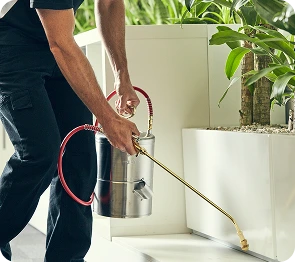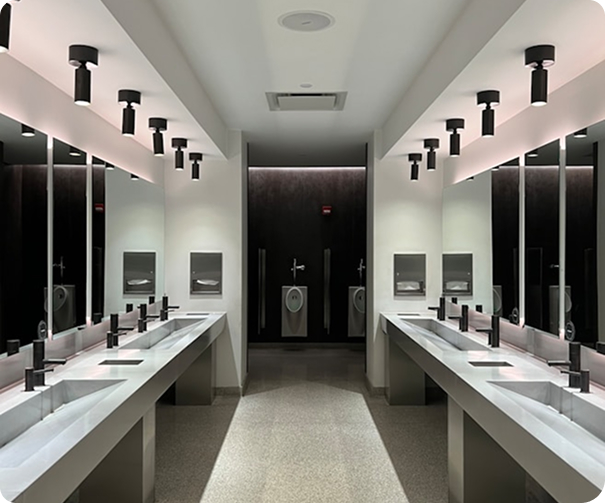Fire Ants Pest Control and Treatment


Fire Ants Pest Control
Fire ants are one of the most aggressive and dangerous ant species found in Australia. Unlike common household ants, they are equipped with a painful sting that injects venom, causing a burning sensation, which is how they got their name. Fire ants are an invasive pest that can cause serious problems in homes, gardens, parks, and agricultural land.
When left untreated, fire ants multiply rapidly. Colonies can spread by releasing additional queens that establish new nests nearby, making infestations grow out of control very quickly. Their presence not only poses a risk to people and pets but also damages lawns, crops, and local ecosystems.
What Do Fire Ants Look Like?
Fire ants are generally dull red in colour, ranging from reddish-brown to reddish-black. They are small ants, measuring between 2–6 mm long, but colonies contain ants of varying sizes.
One of their most distinctive features is their stinger. Fire ants both bite and sting. They first using their jaws to latch on, then inject venom with their stinger multiple times. This makes them far more aggressive than common black house ants or sugar ants.
Where Do Fire Ants Live?
Fire ants build large, visible soil mounds, often in sunny and open areas such as lawns, gardens, and fields. These mounds can be dome-shaped and grow up to 18 cm high and 60 cm wide. Unlike some ants that prefer shaded or hidden spots, fire ants actively avoid dense shade and are rarely found in forests.
They are least active during the hottest part of the day but can often be seen foraging in the morning or late afternoon. If their mounds are left undisturbed, colonies can expand rapidly, creating satellite nests and overwhelming entire areas.
Common Types of Fire Ants in Australia
Australia is home to several species of fire ants, all of which are considered aggressive and invasive. Unlike common household ants, fire ants sting as well as bite, often swarming in large numbers when their nests are disturbed. Their venom causes intense burning pain, swelling, and in some cases, dangerous allergic reactions.
Fire ants also damage lawns, crops, and natural ecosystems by building large soil mounds and outcompeting native species. Because of their ability to spread rapidly and form multiple colonies, they are a serious pest that requires swift attention.
Below are the most common types of fire ants found in Australia and why they are a problem.
Coastal Fire Ant (Solenopsis geminata)
How they look
Coastal fire ants are reddish-brown in colour, with workers measuring 3–5 mm. Like other fire ants, they carry stingers and can inflict painful burning bites.
Where they live
They are typically found in warm, humid coastal regions of Australia. Coastal fire ants build nests in sandy soil, gardens, and landscaped areas near shorelines, often in exposed sunny spots.
Why they are a problem
Their stings can cause painful welts and allergic reactions. They can damage gardens and lawns, disturb recreational areas, and spread aggressively. Their colonies often go unnoticed until they become large and difficult to control.
Red Imported Fire Ant (Solenopsis invicta)
How they look
Workers are 2–6 mm long, with reddish-brown bodies and darker abdomens. They have a distinct waist and a stinger at the tip. Their aggressive behaviour and painful stings set them apart from many other ants in Australia.
Where they live
Native to South America, red imported fire ants have established themselves in parts of Queensland and the Northern Territory. They build large, dome-shaped mounds in sunny, open spaces such as lawns, fields, and gardens. Colonies spread quickly by producing additional queens that set up new nests nearby.
Why they are a problem
These ants are highly aggressive and attack in swarms if disturbed. Their stings are painful and potentially dangerous, particularly for children, pets, and allergy sufferers. They damage turf and crops, disrupt ecosystems, and are extremely difficult to control without professional intervention.
Tropical Fire Ant (Solenopsis virulens)
How they look
Tropical fire ants are smaller, ranging from 2–4 mm, with orange to dark red bodies. Despite their size, they are extremely aggressive and deliver venomous stings.
Where they live
They thrive in tropical and northern parts of Australia, especially in urban gardens, bushland, and parks. Nests are commonly built in soil, under rocks, or within debris in sunny environments.
Why they are a problem
Tropical fire ants swarm quickly and sting repeatedly when disturbed. They pose risks to humans and pets, while also displacing native ants and disrupting local ecosystems. Left untreated, colonies expand and create persistent infestations.
How to Identify Fire Ant Infestations
Nests and Soil Mounds
One of the most obvious signs of a fire ant infestation is the presence of dome-shaped soil mounds. These nests are usually found in sunny, open spaces such as lawns, fields, and gardens. They can reach up to 18 cm high and 60 cm wide. Unlike other ants that often hide their nests, fire ant mounds are very visible. If left undisturbed, colonies multiply quickly and new queens establish additional mounds nearby.
Foraging and Swarming Behaviour
Fire ants are extremely aggressive. When disturbed, they swarm in large numbers and can quickly climb up vertical surfaces such as shoes or legs. Each ant bites to grip, then uses its stinger to inject venom multiple times. This swarming behaviour sets them apart from other ants and makes infestations especially dangerous in backyards and outdoor areas.
Spread of Infestations
Fire ants spread both naturally and through human activity. Colonies can be transported in infested soil, sod, hay, nursery stock, or even beehives, which is why strict quarantine rules require these materials to be certified fire ant-free. Newly mated queens may also be carried accidentally on vehicles or machinery.
Naturally, colonies expand in several ways. Winged queens can fly short distances — usually up to three miles — to establish new nests, and wind can carry them much further. Colonies with multiple queens may “bud off,” forming new nests nearby. During floods, ants form floating rafts of workers and queens, allowing entire colonies to move to new areas. These methods of spread make fire ants extremely difficult to contain.
Stings and Health Risks
Fire ants are best identified by their sting. Stings usually appear as clusters of swollen red spots that develop into blisters on top. The sensation is painful and burning, followed by itching that may last up to a week.
While most stings cause only local irritation, some people experience severe allergic reactions. Symptoms such as difficulty breathing, dizziness, or throat swelling require urgent medical attention. Fire ant stings can also be dangerous for pets, livestock, and small children due to the ants’ tendency to attack in swarms.
For mild stings, simple home treatments may help relieve symptoms. Cold compresses can reduce swelling, while hydrocortisone cream or an antihistamine can ease itching. A triple antibiotic ointment can prevent infection if stings are scratched open, and oatmeal baths may provide additional relief from irritation.
Property and Environmental Damage
In addition to health risks, fire ants damage lawns, gardens, and agricultural land with their mound-building. Their presence makes outdoor areas unsafe for people and pets. They also disrupt ecosystems by outcompeting native ants and reducing local biodiversity. In agricultural areas, infestations can reduce crop yields and impact grazing land.
Signs of Heavy Infestation
In severe cases, multiple large mounds will appear across open areas, making outdoor activities difficult. Swarming behaviour becomes common when lawns, pathways, or gardens are disturbed. Stings may occur frequently, and new mounds may spread rapidly as colonies split off and establish additional nests.
At this stage, professional pest control is essential to properly identify all colonies — including hidden satellite nests — and apply treatments that prevent further spread.
How to Prevent Fire Ant Infestations
Fire ants are one of the most invasive and aggressive pests in Australia. They build large soil mounds, swarm when disturbed, and deliver painful stings that can be dangerous for children, pets, and allergy sufferers. A single colony can contain hundreds of thousands of ants and multiple queens, which makes infestations spread rapidly if not managed.
Preventing fire ants from settling on your property is always easier than dealing with an active infestation. By removing the things that attract them and blocking their entry points, you can greatly reduce the risk of these pests taking hold.
Keep Outdoor Areas Clean
Fire ants are highly attracted to scraps and waste. Rubbish left in gardens, food scraps, or even unclean pet areas can quickly draw them in. Keep lawns and outdoor spaces tidy, clear away debris, and make sure bins are sealed tightly with lids. Regularly cleaning around outdoor taps, barbecues, and feeding areas will also help remove potential attractants.
Protect and Store Food Properly
Like other ants, fire ants are always searching for food to bring back to their colony. Pet food stored outdoors is one of the most common lures. Always keep pet bowls clean and store food in sealed containers. Any human food stored outside, such as barbecue supplies, should also be packed away securely. Reducing access to food is one of the simplest ways to make your property less appealing.
Eliminate Moisture Sources
Fire ants require moisture to survive and can set up colonies in unusual places, including rooftops, wall voids, and around leaking pipes. Repair any outdoor leaks quickly, check garden taps regularly, and inspect indoor plumbing if you suspect hidden leaks. Keeping outdoor areas dry and well-maintained makes them far less attractive to fire ants.
Seal Cracks and Entry Points
Although fire ants typically nest outdoors, they can enter buildings through small gaps and holes in exterior walls. Check around doors, windows, vents, and utility lines for openings and seal them with caulk or appropriate sealant. Installing door sweeps on exterior doors and garage doors can help block easy access points.
Watch for Soil Mounds
Fire ants build dome-shaped mounds in sunny, open areas such as lawns, playgrounds, pastures, and parks. These mounds may appear small above ground but often house extensive underground colonies. Regularly inspect your yard, garden, and outdoor spaces for new mounds and act quickly if you find them before colonies grow and spread further.
Act Quickly if You Spot Them
Fire ants move rapidly when disturbed and are known to relocate colonies if threatened. Because of this, early detection is critical. If you suspect fire ants on your property, avoid disturbing the nests and seek professional treatment before the infestation spreads.
How to Get Rid of Fire Ant Infestations
Fire ants are one of the most difficult pests to control. Their colonies are vast, stretching deep underground, and often contain multiple queens. This means that even if part of a colony is destroyed, it can quickly recover. To make matters worse, when one colony is eliminated, nearby colonies often move in to fill the space.
Because of their aggressive swarming behaviour and painful stings, fire ants are more than just a nuisance, they are a public health risk. Eradicating them usually requires a combination of at-home measures and professional pest treatments.
At-Home Actions to Get Rid Of Fire Ants
Use Fire Ant Baits
Baits are one of the most effective ways to control fire ants, though they take time to work. Most baits are made of corn grits treated with insecticide. Foraging ants carry the bait back to the colony, where it is shared with other workers and the queen. Depending on the formulation, the bait either kills the queen or makes her infertile, leading to the collapse of the colony. While slow-acting, baits often achieve 80–90% control when used correctly.
Try Mound Drenches
Mound drenches involve pouring a liquid pesticide directly into a fire ant mound. The solution penetrates the underground tunnels, killing ants within hours. While effective for visible nests, drenches often leave hidden satellite colonies untouched, so follow-up treatments may be needed.
Use Insecticidal Dusts
Dust insecticides can be applied directly to fire ant mounds. The fine particles stick to the ants’ bodies and are carried deeper into the colony as they move through the tunnels. This method is useful for treating dry areas where liquid drenches are less effective.
Professional Fire Ant Treatments
While at-home methods may reduce numbers, large or persistent fire ant colonies are rarely eradicated without professional help. Licensed pest controllers use targeted treatments designed to reach every part of the colony.
Colony-Wide Baiting Programs
Technicians spread professional-grade bait across affected areas. These formulations are designed to be highly attractive to foraging ants while minimising risks to pets and children. Once carried back to the nest, the bait circulates through the colony, killing workers and queens alike.
Direct Nest Treatments
For accessible nests, pest specialists can apply liquid drenches, foams, or dusts that penetrate deep underground. These treatments are faster-acting than baits and can wipe out entire colonies when applied correctly.
Exclusion and Prevention
Fire ants are notorious for re-infesting areas if preventative measures aren’t taken. Professionals can inspect your property for entry points and conditions that attract fire ants, then recommend sealing gaps, improving drainage, and removing potential nesting sites to reduce future risk.
Follow-Up Inspections
Because fire ants often have multiple queens and satellite colonies, follow-up visits are essential. Pest controllers check for new activity, reapply treatments if necessary, and confirm that infestations have been fully eliminated.
Call a Pest Control Professional
Fire ants are not just a backyard nuisance, they are an invasive, aggressive pest that can harm people, pets, and livestock. Their painful stings can cause serious allergic reactions, while their mound-building damages lawns, crops, and outdoor spaces.
A licensed pest control company can confirm the presence of fire ants, assess the scale of the infestation, and apply safe, effective treatments tailored to your property. Eco-friendly and low-toxicity solutions are also available if you’d prefer to minimise chemical use.
Need help now? Book a professional fire ant inspection on 1300 766 614. Our experts will inspect your property, explain your treatment options, and create a customised plan to eliminate fire ants and stop them from coming back.
Pest control for the home and business
We offer expert pest eradication and prevention services for every environment – from homes and commercial kitchens to healthcare and offices. Explore the solutions we provide to keep your spaces safe, clean, and protected long-term.
Common pests we deal with
We deliver tailored, long-lasting pest control with a focus on safety, service and results.
From ants and cockroaches to bed bugs and pantry pests, we treat the full range of infestations found in Australian homes and businesses. Our trained technicians know how to identify the issue quickly and apply the right solution to remove pests – and keep them from coming back.
Ants are attracted to food sources and can contaminate food areas, often requiring professional help to locate and remove nests.
Bed bugs infestations are notoriously difficult to beat and hide in bedding and furniture, leaving bites and stains as signs of infestation.
Cockroaches thrive in warm, moist environments, breed quickly, and can leave behind odours and stains—early treatment is key.
Fleas feed on blood, mostly living off pets, and can survive dormant in the environment for months. Professional treatment is often needed.
Silverfish are fast, wingless insects that prefer warm, dark areas and can live for years, feeding on starchy or synthetic materials.
The formidable appearance and size of spiders makes them the most feared of all the creepy crawlies. However most spiders are harmless and avoid people.
Pantry moths infest dry food and can contaminate large amounts of it with webbing and droppings, regular checks and baits help prevent them.
Carpet beetles damage rugs and feed on hair, skin, and feathers, often going unnoticed until larvae husks or damage appears in hidden spaces.
Rodent control that removes the risk — fast and for good
Rats and mice pose serious health, safety and hygiene risks for homes and businesses. Our trained technicians quickly identify entry points, eliminate infestations, and implement proven prevention measures to keep rodents out for good.
Bird problems controlled with expert, long-term solutions
Birds can damage buildings, spread disease, and disrupt operations. We provide specialist bird control using proven methods and premium materials—designed to stop nesting, roosting and mess, and keep birds from coming back.
Termite protection that stops damage before it starts
Termites can silently destroy timber structures, causing costly and sometimes irreversible damage. Our licensed technicians use advanced detection tools and proven treatment systems to eliminate colonies and protect your property long-term.
Bed bug infestations found fast — and stopped for good
Bed bugs can spread quickly, cause discomfort, and damage your reputation if left untreated. Our expert team knows how to detect the early signs, eliminate infestations at the source, and prevent them from coming back with proven, long-term solutions.
National hygiene service. Local teams you can trust.
We deliver consistent, high-quality hygiene services to businesses across Australia. Unlike global franchises or contractors, our full-time staff operate nationwide—so you get reliable service, clear accountability, and a standard of care you can trust, no matter where you are.
Safe for families and pets
We work with the latest in safe pest control technologies and treatments, keeping your staff and customers safe. Our professionally trained technicians use targeted solutions at the source of the problem to keep bugs out and keep your business safe.
Our ISO1401 certification for environmental impact management and HACCP food safety certification means you can trust Competitive Pest Control Services care about the safety and protection of your facility.
Our technicians use only the safest, environmentally friendly treatments available in and around your home, to keep pests at bay giving you peace of mind as the kids continue to play in a safe and healthy environment.
There’s more to effective pest control than chemicals. We target our applications to the source of the problem from enhanced inspections to exclusion methods followed by protection.
All our treatments are environmentally friendly, because we love the Earth as much as you do. Our expertise enables us to keep chemical application to a minimum to keep the pests away, and we’re 100% carbon neutral.




